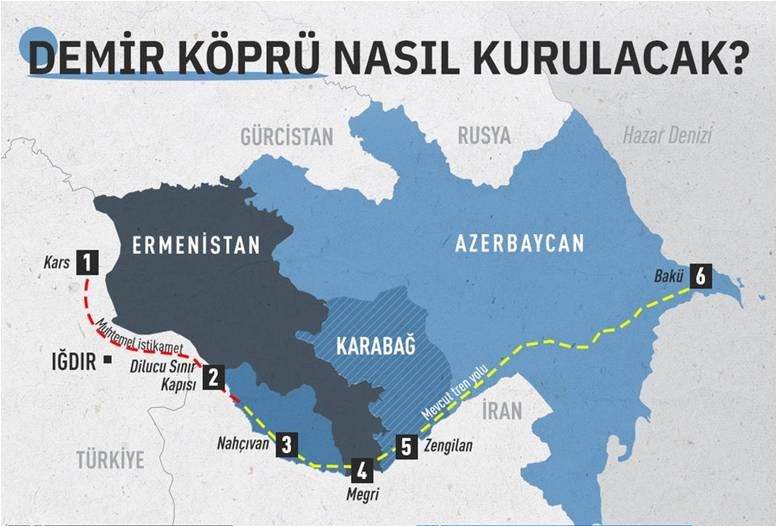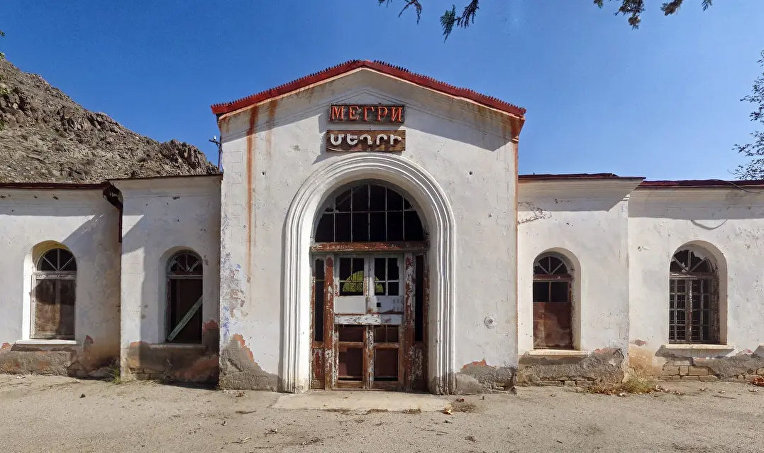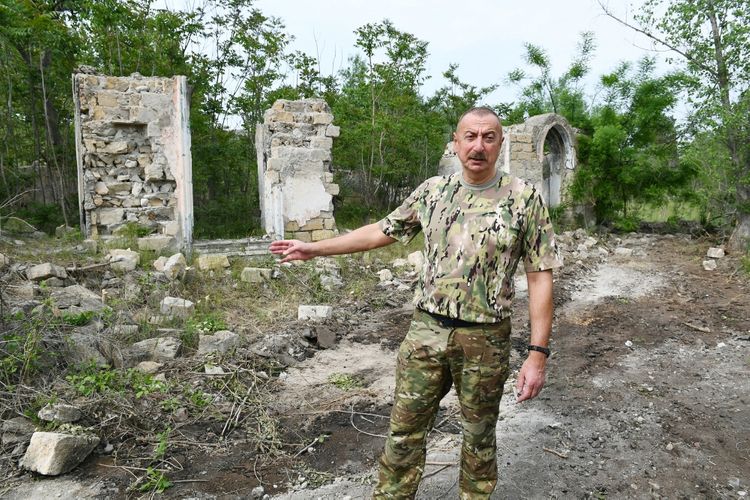
The November 10 statement envisages the opening of communications, but not “corridors”, reads an article published at news.am. The Armenian author made such a statement, commenting on the opinion of Leonid Kalashnikov, chairman of the Russian Duma committee on CIS, Eurasian integration and work with compatriots, that the Zangezur corridor is envisaged in the trilateral agreement.
It is not the first time that the Armenians come up with such conclusions. The mass media of this country regularly publish articles against the Zangezur corridor, they are trying to prove that this corridor is not provided for in paragraph 9 of the statement dated November 10. Even acting Prime Minister of Armenia Nikol Pashinyan tried to challenge this thesis in a number of his speeches.
Pashinyan: Issue of Zangezur corridor isn’t mentioned in statement of November 10 and isn’t discussed
The Armenian side, having suffered a heavy defeat in the second Karabakh war, had to sign a trilateral statement, agreeing with the conditions of Azerbaijan. According to a statement signed on November 10, 2020 by the presidents of Azerbaijan and Russia, as well as the Prime Minister of Armenia, Yerevan assumed a number of obligations.
One of these obligations is also reflected in paragraph 9 of the statement. All economic and transport connections in the region shall be unblocked. The Republic of Armenia shall guarantee the security of transport connections between the western regions of the Republic of Azerbaijan and the Nakhchivan Autonomous Republic in order to arrange unobstructed movement of persons, vehicles and cargo in both directions. The Border Guard Service of the Russian Federal Security Service shall be responsible for overseeing the transport connections, the statement says.

The Armenian side is trying to give a different meaning to the wording “transport connections between the western regions of the Republic of Azerbaijan and the Nakhchivan Autonomous Republic”. Statements on this topic emphasize that this implies not a "corridor" and the restoration of this corridor, but the creation of new transport links. They even argue that this issue is not a topic of discussion.
Nikol Pashinyan: Armenia doesn’t intend to discuss Zangezur Corridor issue with Azerbaijan
First of all, the expression “transport communications between the western regions of the Republic of Azerbaijan and the Nakhchivan Autonomous Republic” is quite specific and leaves no room for further interpretation. Moreover, in the first sentence of this paragraph, as well as in the next trilateral statement signed in Moscow on January 11, 2021, almost two months after the Karabakh war, the restoration of transport links is the case.

Naturally, another route of transport communication existed between Azerbaijan and Armenia in the past, and the wording “restoration of all transport links”, which is present in the statement, includes it as well.
On the other hand, “transport communications between the western regions of the Republic of Azerbaijan and the Nakhchivan Autonomous Republic” means a railway line operating before the occupation of Azerbaijani lands by Armenia. This is a railway passing through the Meghri region of Armenia to the Ordubad region of Nakhchivan. The restoration of the 43 km long corridor passing through Meghri means the revival of the historic Alat-Minjivan-Julfa railway line with a total length of 445 km, which was gradually put into operation in 1936-1941.
At the same time, the Armenians, giving a different meaning to the wording “transport communications between the western regions of the Republic of Azerbaijan and the Nakhchivan Autonomous Republic”, “forget” that there is no other transport route in the region connecting West Azerbaijan and Nakhchivan. Therefore, it is an indisputable fact that this statement implies the opening of this very corridor between Azerbaijan and Nakhchivan.
Railfreight: Azerbaijan plans to revive forgotten Caucasian railway
The railway line passing through Meghri was closed as a result of Armenia's territorial claims to Azerbaijan and the subsequent military aggression on its part. It can be said that since 1991 the section of the Alat-Julfa road passing through Meghri has ceased its activity. Then, as a result of the occupation of Fuzuli, Jabrayil and Zangilan regions by Armenia, 144 km of the Azerbaijan railway Horadiz-Ordubad (including 43.4 km through the territory of Meghri) came under the control of Armenia.
During the occupation, the Armenians completely destroyed the railway line, including the tracks and infrastructure on the territory of Meghri.

When we talk about the restoration of the transport corridor, we imply the restoration of the aforementioned line and infrastructure. The Azerbaijani side has already started preliminary work. So, on February 14, 2021, President of Azerbaijan Ilham Aliyev laid the foundation of the Horadiz-Agbend railway line. Construction work is currently underway on the 100-kilometer road. Construction of a 43-kilometer section of the Zangilan-Agbend railway line passing through Meghri will be resumed in accordance with an agreement between Azerbaijan and Russia. This is because the railway system of Armenia is owned by Russia.

As for the provision on "construction of new transport communications connecting the western regions of Azerbaijan with the Nakhchivan Autonomous Republic", the Azerbaijani side does not dispute it. As part of his visit to Karabakh, the president of Azerbaijan announced the restoration of the railway to Nakhchivan and the opening of a new highway.
In this sense, the expression “construction of new transport communications” does not exclude the restoration of the railway line passing through Meghri and which is called the Zangezur corridor. That’s because the issue of restoring transport links, as we noted above, was reflected both in paragraph 9 of the statement of November 10, and in the next trilateral statement signed in Moscow on January 11, 2021. Therefore, the fact that Armenians only raise the issue of “new communications” does not change this reality.




















